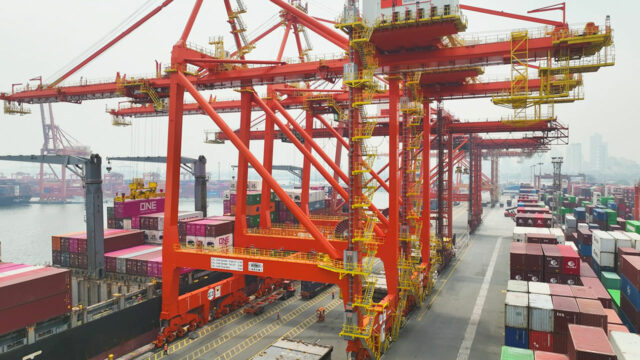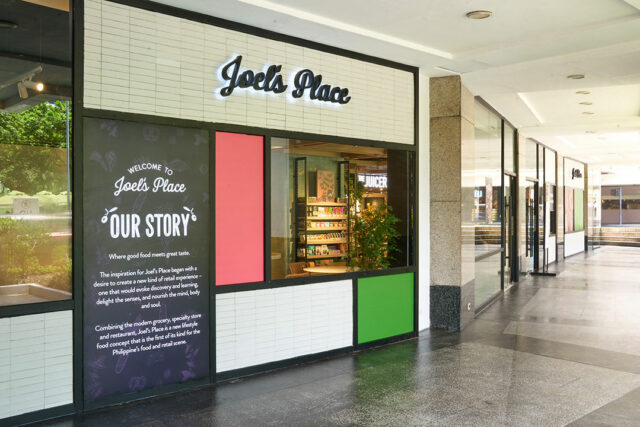Almost like clockwork at around this time of the year, we are treated to the spectacle of tons of water overflowing or released from dams every time rainstorms strike.
These events always leave death in their wake (39 fatalities from the recent floods unleashed by storm-enhanced monsoon rains as of this writing), as well as infrastructure and property damage, while floods erode production of rice, corn, and high-value crops.
I don’t know about you, but that seasonal scene always leaves me with a mix of exasperation and dismay, coming as it does this year right in the wake of six months of drought (ok, some bureaucrats balk at that term and prefer the milder term, “dry spell”) that dries up fields as well as taps in parts of Metro Manila. You just never get used to it.
So, we reel from a lack of water in the first half of every year (a “dry spell” serious enough for Catholic bishops to ask the faithful to pray for deliverance from drought and record heat), and from an excess of it in the second half. It is almost a comic situation were it not for the deaths, infrastructure and property damage, as well as other dire consequences to households (and, by inference, to every inconvenienced factory and service worker, teacher and student) and to agriculture, which contributes nearly 9% (used to be a tenth about a decade or so ago) to the overall economy.
For a calamity that can be expected to strike almost to the month each year, one would hope that the government had a solution by now.
Well, at least we no longer hear bureaucrats extol the “resilience” of the ordinary Pinoy every time public services fail big time — an official mantra which more and more citizens now regard as an insulting smoke screen for government incompetence.
And so I await the next public hearing which the Senate will hold any day now on the government’s funding for flood control projects under the Department of Public Works and Highways (DPWH), totaling some P556 billion since the start of this administration in 2022, including about P244 billion just for this year (compared to P182 billion last year, P128 billion in 2022, P101 billion in 2021, and over P90 billion in 2020, according to a Senate statement a few days ago).
SEEKING MODELS
Back to the scene of overflowing dams, which for some reason evokes the image of the Chinese character for “crisis,” consisting of the word “wei” (“danger”) and “ji” (“inflection point,” which the West very loosely — some experts say, erroneously — interprets as “opportunity”): is there opportunity staring us in the face there?
In the wake of the recent calamity, netizens cited examples of how other nations have dealt rather successfully with floods.
Worth noting in Asia are the likes of Japan and Singapore, which prevent floods from overwhelming existing drainage infrastructure through integrated systems that include surface and underground water retention structures that then release the excess runoff slowly into surrounding canals and other bodies of water when floods recede.
Singapore, which had grappled with severe floods from the 1950s (well, it secured its independence in August 1965) to as late as the early 2000s, has built flood management infrastructure that include an 8.9 hectare “pond” on Jurong Island with a capacity equivalent to 50 Olympic-sized swimming pools. There, accumulated stormwater gradually seeps into the aquifer and drains slowly into the sea. And slated to be completed in the third quarter of 2025 is the massive underground Syed Ali Detention Tank that will temporarily hold excess water during heavy rain.
What does this tell us? That even advanced economies like Singapore — which has the wherewithal to plan and execute projects and programs efficiently and effectively — are hard-pressed to keep coping with climate challenges.
NATURAL FLOOD PLAIN
And what of the Philippines?
Civil and environmental engineers (like those of the University of the Philippines who were interviewed on TV after the latest floods) tell us that water always seeks the lowest point, and that the land on which Metro Manila sits has always been a natural flood plain that drains excess waters from surrounding mountains into Manila Bay (oh, great). Blocking that natural flow with manmade structures simply forces floodwaters to find another route through surrounding areas to try to drain into the bay — or else collect like stagnant ponds in the capital region.
My home is perched atop a hill overlooking the Marikina Valley, and I recall watching, back in the 1970s to 1980s, the water from the Marikina River spill amid storms into the adjacent forests… all of which have been replaced completely by subdivisions and commercial establishments.
While it will be interesting to check the components of the DPWH’s flood control program, what is clear from this month’s experience is that rainstorms can overwhelm the capacity of our existing drainage pumping stations. Even a layman can see that our flood-control systems — which should be upgraded or tweaked as regularly as those of our neighbors — have been sorely inadequate. Something more — or even something else — needs to be done.
Pinoys’ general lack of garbage discipline (just note how many times in a week one has seen someone in an SUV throw food wrappers out of the window or how much trash is left on tables or seats in public areas at any given time — even with near-empty garbage bins in plain sight) and local governments’ poor waste disposal systems worsen the problem. But they are not primarily to blame.
THE WAY TO GO
We need not look just to our neighbors for other readily available remedies. By now, many of us are aware that Bonifacio Global City (BGC) has been spared the floods that regularly inundate much of Metro Manila, since it benefits from a big water detention tank lying under Burgos Circle. That facility, reportedly about five-storeys deep, can hold enough stormwater to fill up eight Olympic-sized pools. That water is pumped out to the Pasig River once the floods in Metro Manila recede.
A few days ago, I had the privilege of chatting briefly with Rogelio L. Singson, who had served as Public Works and Highways secretary from 2010 to 2016, president/chief executive officer (CEO) of Maynilad Water Services, Inc. from 2007 to 2010, and president/chairman of the Bases Conversion Development Authority from early 1998 to early 2002, among others. He is currently non-executive director at the Metro Pacific Investments Corp., which has a 51.27% controlling stake at Maynilad Water Holding Co., Inc. (the others being DMCI Holdings, Inc. with about 27.19%, and Marubeni with 21.54%), as well as president/CEO of Metro Pacific Water and Metro Pacific Tollways Corp.
Mr. Singson has always advocated for the construction of more water detention tanks like that of BGC, which was built in the early 1990s as Fort Bonifacio was privatized.
“It isn’t that costly,” he insisted, and in a television interview before the pandemic he said that the BGC facility cost about P65 million. Now, compare that to the DPWH’s own billions of pesos in annual flood control projects that have failed to measure up to the challenge. We have enough money to do several of these dams, water impounding or regulating ponds,” he said.
MORE THAN FLOOD CONTROL
And we are no longer talking just of flood control here, mind you.
As I said, where there is crisis, there may be opportunity. Hence, I was glad to read that President Ferdinand R. Marcos, Jr. himself said last week that the government is now looking for sites outside Metro Manila for big water impounding projects that can also serve irrigation needs.
Water impounding is not a new technology for us, since the United Nations’ Food and Agriculture Organization has been helping the government for quite some time now in putting up small water impounding facilities for far-flung communities nationwide that do not have ready access to potable and irrigation water.
So this is tantamount to hitting three birds with one stone — flood mitigation, irrigation, and household water.
Mr. Singson had also proposed a similar facility in other flood-prone areas like Pampanga, where he said a 200-hectare water-impounding pond can be put up in the Candaba swamp (taking up just a tenth of the entire area.) The idea was opposed by some officials there.
In any case, he said, water impounding can be considered a “medium-term” solution, to Metro Manila’s worsening water supply. The establishment of new dams like Kaliwa in Tanay, Rizal — which has languished for more than two decades — remains the long-term solution to Metro Manila’s worsening water supply woes as Angat Dam, which provides more than 90% of the capital region’s supply, has increasingly fallen short of demand. Metro Manila’s water service concessionaires — Metro Pacific’s Maynilad and Ayala’s Manila Water Co., Inc. — estimate their supply-demand gap is more than 1,500 million liters per day each, with supply remaining relatively stable even as the capital’s congestion worsens.
Both concessionaires have been looking for ways to augment their supply. Maynilad, for example, has allocated some P686 million to transform the four lagoons in the La Mesa Compound in Quezon City, where sludge from water treatment is disposed, into an impounding reservoir for raw water from the Angat-Ipo Dam system. When completed in the fourth quarter of 2025, the six-meter-deep reservoir will store about 200 million liters of raw water. This, Maynilad said the other week, should help address reduced water supply when a “dry spell” forces a lower allocation from Angat.
Mr. Singson said that water impounding may even be better planned and executed at the local level, with local governments and even subdivision and economic zone developers — which know their needs better than the National Government — taking the lead. It may even be a regulatory requirement for new subdivisions to include such floodwater detention tanks in their plans, he said, noting that DPWH flood control drains are designed to accommodate only excess water from major roads and not from subdivisions.
Of course, the devil is always in the details, and if there is one thing that can derail even a well-designed and -planned project, it is the approval of affected communities (just recall the Kaliwa project’s history). Every project, it must be remembered, requires an environmental compliance certificate that has the green light of affected households as a prerequisite. Would folks be amenable to the ground being dug up from under their feet to accommodate such a massive structure? Or would such an inbuilt facility affect the attractiveness of subdivision projects?
But even if communities’ opposition were to pose a significant hurdle to this option, local governments can still choose to locate such structures under public spaces.
Perhaps it would help if the floodwater in these tanks could also be processed into potable water. Is such technology available to us? Of course it is! Maynilad’s New Water Treatment Plant in Parañaque City, for instance, uses water from a sewage treatment plant and converts it into potable water that meets the 2017 Philippine National Standards for Drinking Water. For now, two barangays in the city have been benefitting from this new technology. Elsewhere in Southeast Asia, groups in flood-prone countries like Thailand have developed solar-powered modular facilities that purify floodwaters for household use.
KEY QUESTIONS
So, with all these possibilities on the table, what could pose as major hurdles to moving forward in Metro Manila’s quest for less floods and more potable water?
Asked this, Mr. Singson posed his own three questions, which I guess lawmakers could cover in their upcoming inquiry:
• Are these the right projects?
• Do they have the right cost?
• Do they have the right quality (properly executed according to established technical standards)?
“Tatlong tanong lang ’yan; napakasimple nyan (Those are just three simple questions),” he said, explaining that the three points are interrelated, i.e., flawed pricing after anomalous project bidding will affect the quality of materials used. “Sagutin lang nila ’yan (They should just answer those questions). I’ll be as direct as that.”
He declined to elaborate with a chuckle, but one can put two and two together by reading between the lines there.
Water security and a worsening climate are intertwined, and the Philippines has constantly figured as one of the countries worst hit by climate change. Hence, both the government and private sectors have their work cut out for them in figuring out a way towards a more sustainable water supply.
Told in a legislative hearing some years back on Metro Manila’s recurring water crisis that desalination would be too costly an option, one lawmaker replied: “Ang pinaka mahal na tubig ay ’yung walang tubig” (The most expensive water is the water you do not have).
Wilfredo G. Reyes was editor-in-chief of BusinessWorld from 2020 through 2023.













